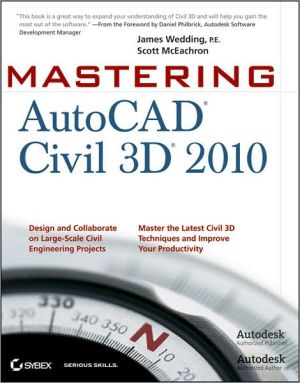AutoCAD Book: Drawing, Modeling and Applications Using AutoCAD 2004, The
The AutoCAD® Book: Drawing, Modeling, and Applications Using AutoCAD® 2004 provides a hands-on approach to the concepts of AutoCAD 2004, allowing the users to start drawing early on in the text. The text begins with an introduction to the basic concepts of AutoCAD, its on-screen appearance and interface, and ways to solve common problems. It then moves from basic AutoCAD commands to complex z-Dimensional exercises and finally to advanced 3-Dimensional modeling and rendering. The exciting new...
Search in google:
The AutoCAD® Book: Drawing, Modeling, and Applications Using AutoCAD® 2004 provides a hands-on approach to the concepts of AutoCAD 2004, allowing the users to start drawing early on in the text. The text begins with an introduction to the basic concepts of AutoCAD, its on-screen appearance and interface, and ways to solve common problems. It then moves from basic AutoCAD commands to complex z-Dimensional exercises and finally to advanced 3-Dimensional modeling and rendering. The exciting new concepts of gradient hatch rendering, plotting rendered drawings directly from AutoCAD, and using the Internet to capture 2D and 3D blocks for use in existing drawings is covered in detail. The text ends with a series of application sections, with projects for architectural, civil, electronic and electromechanical drawing and for technical illustrating. The final section contains 41 hand-drawn pencil sketches that can be used for more than 200 exercises. The text includes the following features to help users learn, practice, and master AutoCAD® skills: Project-based approach that guides users through the software in a logical way An easy-to-follow "prompt/response" format that takes users step by step through each new command/activity Highlighted information boxes—Tips, Warnings, and Notes—that help new AutoCAD users become more comfortable with the software Practice exercises in every chapter Real-world applications for a variety of fields Numerous figures, screen captures, and illustrations Review questions at the end of every chapter Hand-drawn, real-world SKETCHES FOR INDUSTRY exercisesto simulate a working environment Icon identifies features new to AutoCAD 2004
The popularity of AutoCAD® has generated numerous books and manuals—most of which are similar to the reference manual that accompanies the AutoCAD software. However, AutoCAD is difficult to learn using just a reference manual or a book structured like one. The AutoCAD® Book: Drawing, Modeling, and Applications Using AutoCAD® 2004 was written in response to the need for a book with an easy-to-follow format designed for people with various educational backgrounds and at differing levels of computer experience. It was developed by people who teach AutoCAD in the classroom setting and who use AutoCAD to produce drawings for manufacturing and construction.\ Using the "hands-on" approach to the AutoCAD computer package is the fastest and most effective method of learning to use this powerful and exciting drawing tool. Therefore, this text teaches students to use AutoCAD by drawing with it.\ All the material in this textbook has been carefully class-tested. People who have used the book have learned quickly to become productive with AutoCAD, and they are pleased with the clarity of the presentation and the fact that it assumes no familiarity with computers. Many have even been inspired to create menus and customize AutoCAD for their specific situations. Features\ This new edition covers AutoCAD 2004. Some of the features of this edition are\ \ Complete coverage of the features of AutoCAD 2004.\ Update of "Tips," "Warnings," and "Notes" in the text. Each of these features is designed to help the new AutoCAD user past the stumbling blocks.\ Illustrations of pop-down menus, dialog boxes, andtoolbars for AutoCAD 2004.\ 3-D tutorial exercises, including an introduction to advanced modeling.\ Introduction to AutoCAD's DesignCenter.\ Application sections for architectural, civil, electronic and electromechanical drawing, and technical illustrating.\ New plotting techniques, including plotting as displayed for rendered 3-D objects.\ Examination of new "etransmit," "publish to Web," and attribute extraction features.\ Flagging of new-release features.\ \ Text Organization \ The AutoCAD® Book: Drawing, Modeling, and Applications Using AutoCAD® 2004 is divided into four parts: Part I—Preparing to Draw, Part II—Basic AutoCAD, Part III—Advanced AutoCAD, and Part IV—Applications and Sketches for Industry. Part I (Chapters I-3)\ Chapter 1 outlines the types of drawings to be covered in the book; Chapter 2 describes the AutoCAD program for Windows and its uses and the equipment necessary to use AutoCAD to its fullest extent; and Chapter 3 moves the reader directly into the settings needed to make drawings that are accurate and easy to produce. Part II (Chapters 4-17)\ These drawing chapters show readers step by step how to produce several different types of drawings, including orthographic, sectional, isometric, 3-D, and plan views. Dimensioning, tolerancing, geometric constructions, attributes, block diagrams, and printing are also covered in these chapters. Chapter 15 covers isometric drawing and the use of gradient hatch patterns to produce renderings of isometric drawings. Chapter 17 describes how to customize AutoCAD menus, toolbars, and palettes, and introduces AutoLISP. Part III (Chapters 18-22)\ These chapters cover advanced 3-D commands, 3D Orbit, SHADE, and an introduction to advanced modeling. This part also covers how to use paper space/model space for documenting and plotting drawings. The new Shade Plot option is discussed in detail to allow rendered 3D objects to be plotted as they are displayed on the screen. Part IV (Sections A-F)\ Sections A-E provide many exercises in the application of AutoCAD. Areas covered include the following:\ \ Architectural\ Civil\ Electronic\ Electromechanical\ Technical Illustration\ \ Section F, Sketches for Industry, is a collection of sketches that can be used in approximately 200 exercises throughout the text. Chapter Organization\ Each chapter in The AutoCAD Book: Drawing, Modeling, and Applications Using AutoCAD® 2004 features\ \ Objectives that list commands used in the chapter.\ Clear, concise definitions for new terms when they are first introduced.\ Examples of drawings relating to the chapter topic.\ Step-by-step listings of all commands used in examples and an illustration of each command or series of commands.\ Assignments of varying difficulty that are similar to the examples.\ Review Questions that measure readers' knowledge of the chapter material.\
I. PREPARING TO DRAW. 1. Introduction. 2. The AutoCAD® 2004 Program. 3. Preparing to Draw with AutoCAD® 2004. II. BASIC AUTOCAD®. 4. Block Diagrams. 5. Plotting. 6. Adding Text to the Drawing. 7. Geometric Constructions. 8. Using 2D Commands to Draw Orthographic Views. 9. Drawings, Formats, Blocks, and Attributes. 10. The AutoCAD® DesignCenter. 11. External References (XREFs). 12. Using Raster Images in AutoCAD® Drawings. 13. Dimensioning and Tolerancing. 14. Sectional Drawings and Hatching. 15. Isometric Drawing and Gradient Hatch Rendering. 16. Basic 3-D. 17. Customizing Toolbars and Menus. III. ADVANCED AUTOCAD®. 18. Advanced 3-D. 19. Advanced 3-D: Blocks and 3-D Orbit. 20.Using Model Space, Paper Space, and Layouts to Create, Document, and Present 2-D and 3-D Shapes. 21. Advanced Modeling: Solids, Regions, and 3D Models from the Design Center OnLine. 22. 3-D Tutorial Exercises, Including Rendering and Publishing to the Web. APPLICATIONS AND SKETCHES FOR INDUSTRY. A. Architectural Applications. B. Civil Applications. C. Electronic Applications. D. Electromechanical Packaging Applications. E. Technical Illustrating Applications. F. Sketches for Industry for All Drawing Chapters.
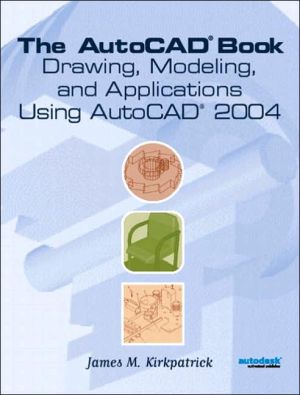
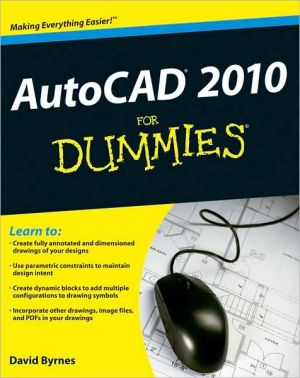

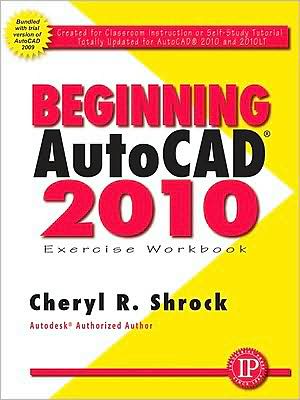
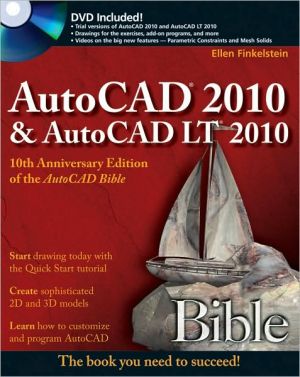
![Mastering AutoCAD 2010 and AutoCAD LT 2010 [With DVD ROM] Mastering AutoCAD 2010 and AutoCAD LT 2010 [With DVD ROM]](/application/data/covers/60/32/9780470466032.jpg)


